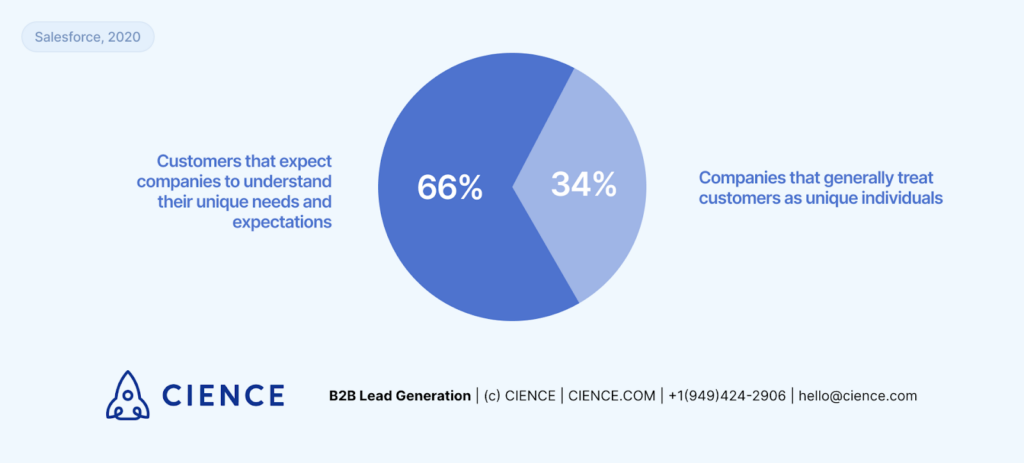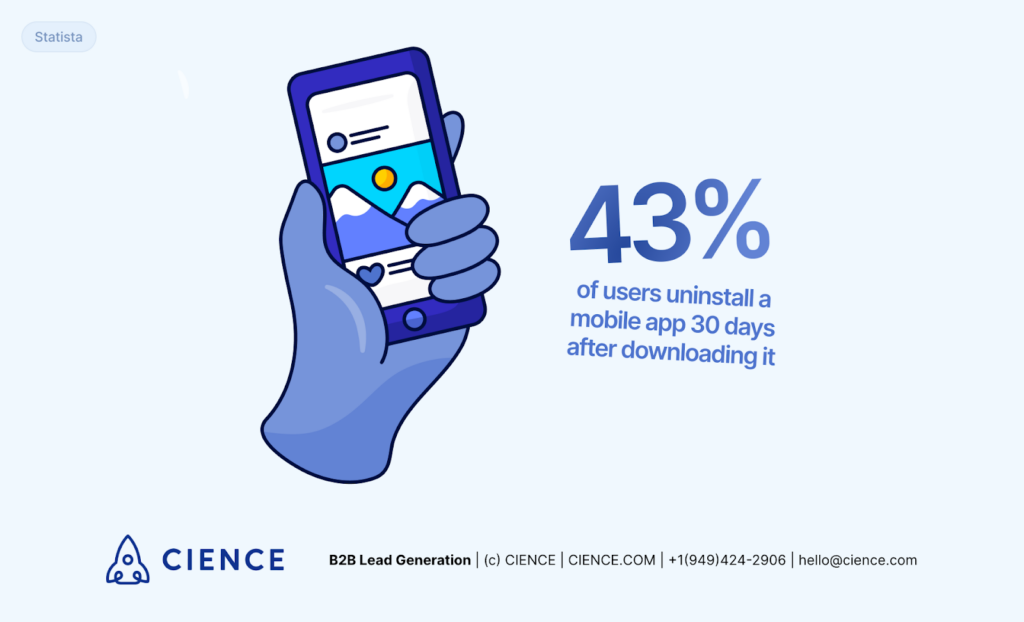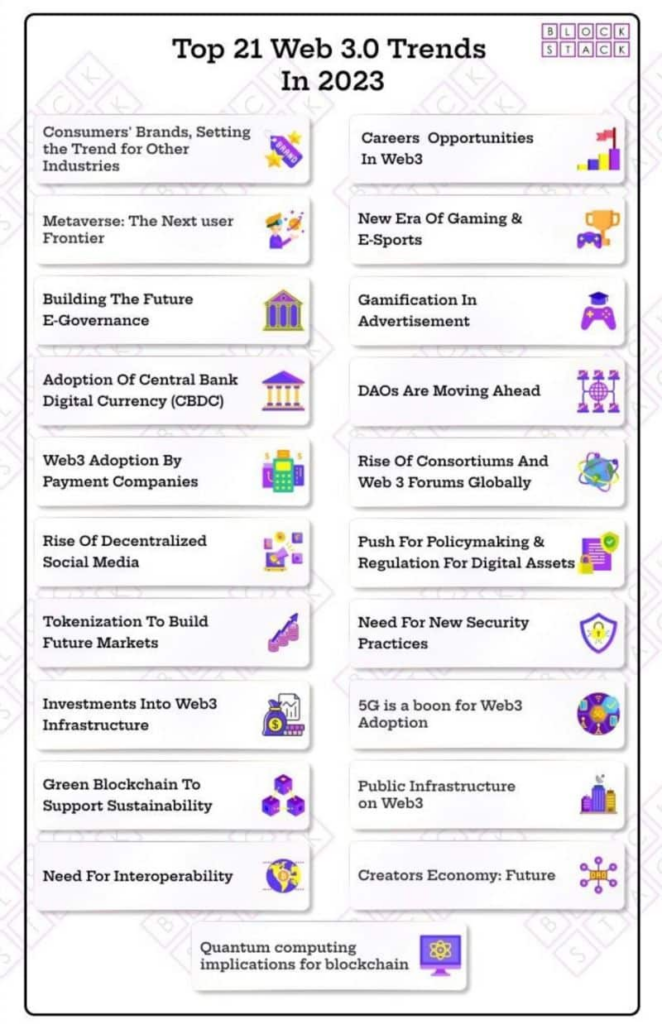Imagine you're piloting a ship on the high seas when suddenly a storm hits, bringing swirling winds and waves. As captain, you must quickly assess the situation and steer firmly yet nimbly towards calmer waters.
This scene epitomizes what it's like navigating the currents of digital transformation as a B2B company leader. The winds represent rapidly evolving customer expectations powered by new digital technologies. One wrong turn risks falling behind the competition—but with skill and foresight, you can guide your B2B business to new heights of innovation and growth.
In this article, I'll share insights to help you captain your B2B marketing strategies through today's digital experience disruptions. You'll learn what digital transformation entails, why it's urgently important, and tactical steps to implement it successfully.
With over 25 years of experience driving revenue growth for leading B2B companies, I bring a seasoned perspective to this topic. My fascination with marketing, buyer journeys, and consumer behavior began early on, even before the digital transformation age took center stage. This led me to pursue an MBA focused on enhancing omnichannel customer experiences. Since then, I've spearheaded marketing strategies across diverse B2B businesses and B2C landscapes, thriving amidst varying scales and budgets.
This foundation has paved the way for a fulfilling career where I stay on the cutting edge through ongoing case studies, research, speaking engagements, and workshops. I am passionate about fostering authentic connections between people and brands, a topic I frequently explore in my keynote speeches, blogs, and podcasts. Consider me your trusted guide in this journey—let's set sail!
What Is B2B Digital Transformation?
First, let's demystify what b2b digital transformation signifies. Essentially, it is the integration of digital technologies into every facet of your b2b business, fundamentally altering how you operate and deliver value to your b2b customers. It transcends merely replacing old tools with new ones in your MarTech stack; it embodies a shift in your business fabric to become more efficient, agile, and customer-centric.
Why Is Digital Transformation Important?
You may wonder why this transformation is so significant. In a world where technology is advancing rapidly, staying ahead of the curve is vital. Digital transformation fosters agility, enabling B2B companies to respond quickly to market shifts and new customer demands while nurturing innovation and unveiling new avenues for growth and development.
Furthermore, it is a critical element in securing business sustainability. As highlighted by IBEXA, "Companies that have embraced digital transformation are 23% more profitable than their peers who have not," underscoring the profound impact it can have on a business's financial health.
The Role of AI in Digital Transformation
Artificial Intelligence (AI) has emerged as a cornerstone of innovation in contemporary business, especially B2B marketing and content marketing. AI is revolutionizing the industry, significantly enhancing lead generation and customer segmentation, and facilitating the creation of more targeted and efficient marketing strategies, as noted in a blog post by CIENCE.
Moreover, AI automates repetitive tasks, freeing marketing project managers to concentrate on strategic activities, and offers predictive analytics, providing insights into market trends and customer behaviors, which are vital in crafting successful marketing campaigns and improved customer experiences.
AI Tools and Providers Enabling Successful Digital Transformation
- IBM Watson: A frontrunner in the AI sector, offering potent data analytics and natural language processing capabilities.
- Salesforce Einstein: Integrated within Salesforce, it utilizes machine learning to bring predictive analytics into the CRM sphere.
- Adobe Sensei: Enhances content creation and customer experience using AI and machine learning.
- Google AI: Offers a range of tools leveraging machine learning and data analytics to optimize operations and marketing strategies.
- Microsoft Copilot: An AI-powered code completion assistant that helps developers write new code faster, improve business processes and more use cases, as discussed in my video interview with Microsfot SVP Frank X Shaw
Understanding And Utilizing The Voice Of Customer (VoC) In Digital Transformation
In the digital transformation journey, understanding and integrating the Voice of Customer (VoC) can be a company game changer. VoC represents the feedback and preferences of your customers, gathered from various digital channels and platforms such as social media, surveys, sales teams, e-commerce contact forms, and customer service chats. It serves as a vital tool in reshaping business strategies to align with your clientele's actual needs and expectations.
Some favorite tools and platforms to help leaders like you include Sprinklr, Medallia, and Qualtrics. These platforms specialize in aggregating and analyzing feedback across the customer journey, enabling B2B businesses to fine-tune their operations and spearhead new product developments that resonate with their audience. By prioritizing customer data and strategies grounded in VoC, digital transformation becomes a customer-centric endeavor, fostering a business model that is innovative and responsive to the shifting demands of the market.
Navigating The Digital Transformation In B2B Marketing
Step 1: Start with a Solid Strategy
Embarking on the digital transformation journey necessitates a robust strategy aligned with your B2B sales objectives. Identify areas in your business ready for digital transformation, be it enhancing customer experience, optimizing operations and business processes, or refining product offerings for B2B buyers. With a clear direction, you can craft a roadmap to attain your B2B business goals.
Step 2: Choose the Right Tools For Your B2B Organization
In B2B marketing, selecting the right tools can significantly influence your success. Platforms like HubSpot, Salesforce, and Marketo offer many features to streamline marketing efforts, encompassing CRM systems, automation, and analytics. Additionally, digital marketing tools like SEMrush, Google Analytics, and Adobe Analytics provide invaluable insights into your online presence and performance, aiding in data-driven decision-making and optimizing marketing strategies for superior outcomes. Think about MarTech stack examples that support a B2B focus.
Step 3: Foster a Digital Culture
A successful digital transformation is not just about adopting advanced technology. It goes much deeper, requiring cultivating a vibrant digital culture within the very heart of your organization. A digital-first culture is characterized by an environment where every team member is encouraged and empowered to embrace digital tools and processes wholeheartedly. It's about fostering a mindset where continuous improvement and innovation are not just goals but a way of life.
As highlighted by INSEAD Knowledge, "Leaders need to foster a digital culture that encourages experimentation and learning from failure." In essence, this statement underscores the necessity for a leadership approach that is open and receptive to new ideas, one that sees failures not as setbacks but as opportunities for growth and learning. It's about creating a safe space and speak-up culture where team members can experiment without fear and innovate with the assurance that their efforts are valued, even if they don't always succeed.
But what does fostering such a culture really entail? It begins with leadership embodying a forward-thinking mindset, being the torchbearers of change and innovation and consistent messaging. It involves creating avenues for continuous learning, where team members are equipped with the skills and knowledge to navigate the digital landscape adeptly. Moreover, it requires establishing collaborative spaces where cross-functional teams can come together to brainstorm and develop innovative and customer-centric solutions for key decision-makers.
Furthermore, nurturing a digital culture means encouraging transparency and open communication, where feedback is welcomed and actively sought. It's about recognizing and rewarding innovative efforts fostering a work environment where creativity and new marketing initiatives are celebrated.
In this rapidly changing digital age, fostering a digital culture is not a luxury but a vital necessity. This culture lays the groundwork for successful digital transformation, guiding an organization to become not only adaptable and responsive but also resilient and forward-thinking in its approach to business and customer engagement.
Step 4: Improve Customer Experiences through Personalized Journey Mapping
Central to digital transformation is the customer. In the digital era, customers anticipate seamless, personalized experiences. As a B2B marketer, enhancing customer experience must be paramount. A pivotal tactic in this endeavor is journey mapping, a holistic visualization of the customer's experience with your brand, identifying touchpoints, and understanding their feelings, motivations, and questions at each stage.
Journey mapping is a transformative tool, breaking company human and data silos and fostering a unified approach to meeting customer needs and expectations. It helps pinpoint areas of improvement, facilitating a cohesive strategy that aligns with customer desires ultimately fostering a brand that resonates with its audience.

Step 5: Measure and Adjust - Embrace the "TAAR" Approach
Digital transformation is a continuous journey, demanding consistent oversight and fine-tuning. It's vital to establish metrics that accurately reflect the progress of your digital initiatives, allowing for informed adjustments based on real-time data. This is where my "TAAR" motto - Test, Analyze, Adjust, Repeat™ comes into play. It serves as a guiding principle during the transformation stages, encouraging a cycle of continuous improvement. By adhering to this approach, you ensure your strategies constantly evolve, helping you adapt swiftly to the ever-changing digital landscape and secure a competitive advantage. It's about fostering a culture of perpetual growth and adaptation, steering your organization toward sustained success in the digital realm.

Conclusion
Embarking on the path of digital transformation in B2B marketing might initially appear as a difficult task, but with a thoughtful and strategic approach, it can pave the way to immense growth and success. It's essential to remember that this journey is a continuous evolution, a commitment to fostering an innovative and agile culture, always ready to learn and adapt. You play a pivotal role in this transformation. Your leadership and visionary insight are the guiding forces that will navigate your organization through the intricate digital landscape, setting the stage for triumph in the digital age.
When executed adeptly, digital transformation can become a powerful catalyst for cultivating customers who return and become advocates for your brand, spreading the word and fostering loyalty. The synergy between digital transformation and customer experience (CX) is undeniable, with marketing serving as the vital glue that binds them together, creating a cohesive and resonant brand narrative.
So, embrace this golden opportunity, lead with unwavering determination, and champion digital transformation with a progressive and inclusive approach, guaranteeing a bright and prosperous future for your business where customers are satisfied and enthusiastic promoters of your brand.
Learn more about Digital Transformation and trends by listening to my Doing CX Right podcast featuring Dr. Joerg Storm, a digital transformation leader with over 500K LinkedIn followers not by accident. We dive deep into trends below.

Enjoyed this article? Be sure to sign up for The CMO newsletter for the best on all things marketing and leadership straight to your inbox.




